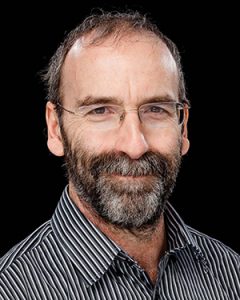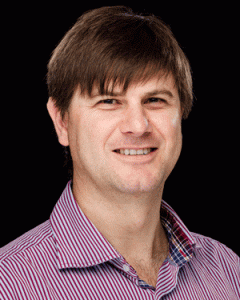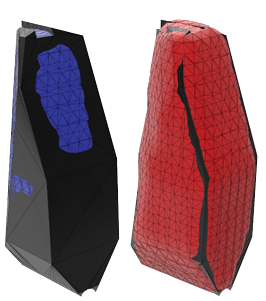 Stope Design and Reconciliation Phase 2
Stope Design and Reconciliation Phase 2
Project Leader: Professor Yves Potvin
Background
The Australian Centre for Geomechanics (ACG) has been working on a stope design research project since late 2017, looking at new ways of performing stope reconciliation and optimising open stope design. This project was funded by the Minerals Research Institute of Western Australia (MRIWA) and the following Australian and Canadian mines: BHP Olympic Dam; MMG Dugald River; Gold Fields Granny Smith; Glencore Mount Isa Copper Operations; Agnico Eagle LaRonde Mine; IAMGOLD Westwood Mine; and Hecla Casa Berardi Mine.
The first phase of the project was completed in December 2019 and the ACG has extended this research into a second phase called Stope Design and Reconciliation (Phase 2). A number of new powerful tools have been developed during Phase 1 to make stope reconciliation more efficient and significantly enhance mine
capabilities to conduct in-depth root cause analyses of overbreak and underbreak. A very comprehensive database of stope design and reconciliation performance parameters from all sponsors’ sites has been collected.

Figure 1: Generic stope design and reconciliation processes
Stope design and reconciliation bench-marking study
The ACG conducted a benchmarking study, sponsored by BHP Olympic Dam, between June and August 2019. The objective of the study was to:
- define and document industry processes for stope design and reconciliation,
- identify standard and advanced practices within these processes, and
- identify gaps to inform the focus of future research.
The data for the benchmarking was collected during two workshops; one in Perth, Australia and the other in Rouyn-Noranda, Canada. A total of 19 mines provided data for the benchmarking study.
The main stope design and reconciliation processes, with relevant input and output parameters, have been mapped and are summarised in Figure 1. It is interesting to note that stope reconciliation can be performed in several technical areas, by different departments. As such, the ‘ownership’ of the overall stope reconciliation process is not always well defined.
In addition to developing the process mapping, the main findings from the study included the following observations:
- The industry collects a lot of stope data (Figure 1)
• Data for planning and design purposes.
• Data from operations and executions.
• Data for reconciliation. - Mining operations do not have efficient means of transforming the data into usable information
• Data manipulation is time consuming, mines have a lack of resources.
• The reconciliation is made via many different pieces of software, and it is not integrated with stope design.
• Most mines limit their analysis to whole stope (overbreak and underbreak) instead of analysing individual stope surfaces or even finer resolution (stope surface points (octree)).
• Most mines only focus on overbreak.
• None of the software packages used have efficient tools to perform root cause analysis. - The industry is not transforming information into knowledge
• There are no methods for forecasting underbreak.
• Industry still uses generic empirical stope design charts from the 80s and 90s.
• Blasting and major faults are not included as design parameters with the current methods used, but can severely affect overbreak and underbreak outcomes.
Objectives of Phase 2
The overall objective of Phase 2 is to improve the transformation of stope design and reconciliation data into better information and, ultimately, into knowledge that can improve stope design and profitability. The focus will
be to enable this transformation from data to knowledge while streamlining the processes, saving time and gaining efficiency into the stope design and reconciliation processes currently used at mine sites.
Specifically, the following objectives will be pursued:
- Expand the current stope design and reconciliation database. Currently the performance of between 1,000 and 2,000 stopes from seven mines will be analysed. Relevant parameters have been collected for
all the stopes. - Develop new stope design tools to forecast overbreak and underbreak on an octree level (Figure 2) but,
more precisely, the mined shape based on expanded databases. Include new factors that may have significant influence on overbreak or underbreak such as drill and blast, major structures, and complicated stope shapes. - Develop an interactive stope design app in mXrap. Investigate the possibility of adding probabilistic capability to the design process.
- Integrate all steps of the stope design and reconciliation process into mXrap to enable efficient data manipulation and analyses and semi-automated reporting (i.e. produce significant time savings for personnel involved in the design and reconciliation processes).
- Roll out the stope design and reconciliation app to project sponsors.
- Investigate the possibility of including economic analyses in the design process.
The current phase of this project is anticipated to be completed in mid-2023.

Figure 2: Overbreak and underbreak experienced in the hanging will is displayed per octree
Project team
Publications




Professor Yves Potvin
Project Lead
Australian Centre for Geomechanics
Benoit McFadyen
PhD Student
Université Laval
Dr Kyle Woodward
Research Fellow
Australian Centre for Geomechanics
Associate Professor Johan Wesseloo
Technical Advisor
Australian Centre for Geomechanics
The following papers were published as an outcome of this research:
- McFadyen, B, Grenon, M, Morissette, P & Woodward, KR 2019, ‘Preliminary assessment of primary stope performance for a seismically active mine’, Proceedings of the 53rd US Rock Mechanics/Geomechanics Symposium, American Rock Mechanics Association, Alexandria, https://www.scopus.com/record/display.uri?eid=2-s2.0-85084024391&origin=inward&txGid=01725fc9b08b947ebe511c76f9cac47f
- McFadyen, B, Woodward, KR, Potvin, Y & Grenon, M 2020, ‘A new stope reconciliation approach’, in J Wesseloo (ed.), Proceedings of the Second
International Conference on Underground Mining Technology, Australian Centre for Geomechanics, Perth, pp. 335–350, https://doi.org/10.36487/ACG_repo/2035_17 - Potvin, Y, Woodward, KR, McFadyen, B & Thin, I 2020, ‘Benchmarking of stope design and reconciliation practices’, in J Wesseloo (ed.), Proceedings of the Second International Conference on Underground Mining Technology, Australian Centre for Geomechanics, Perth, pp. 299–308, https://doi.org/10.36487/ACG_repo/2035_14
- Potvin, Y, McFadyen, B & Woodward, KR 2021, ‘Open stope design; beyond the Stability Graph’, Proceedings of the Underground Operators Conference 2021, Australasian Institute of Mining and Metallurgy, Carlton.
References
Capes, GW 2009, Open stope hangingwall design based on general detailed data collection in rock masses with unfavourable hangingwall conditions, PhD thesis, University of Saskatchewan, Saskatoon, Canada, 300 p.
Clark, L & Pakalnis, R 1997, An empirical design approach for estimating unplanned dilution from open stope hangingwalls and footwalls, CIM AGM, Vancouver.
Nickson, SD 1992, Cable support guidelines for underground hard rock mine operations, MSc thesis, The University of British Columbia, Canada.
Potvin, Y 1988, Empirical open stope design in Canada, PhD thesis, The University of British Columbia, Canada, 350 p, https://open.library.ubc.ca/soa/cIRcle/collections/ubctheses/831/items/1.0081130

 Stope Design and Reconciliation Phase 2
Stope Design and Reconciliation Phase 2